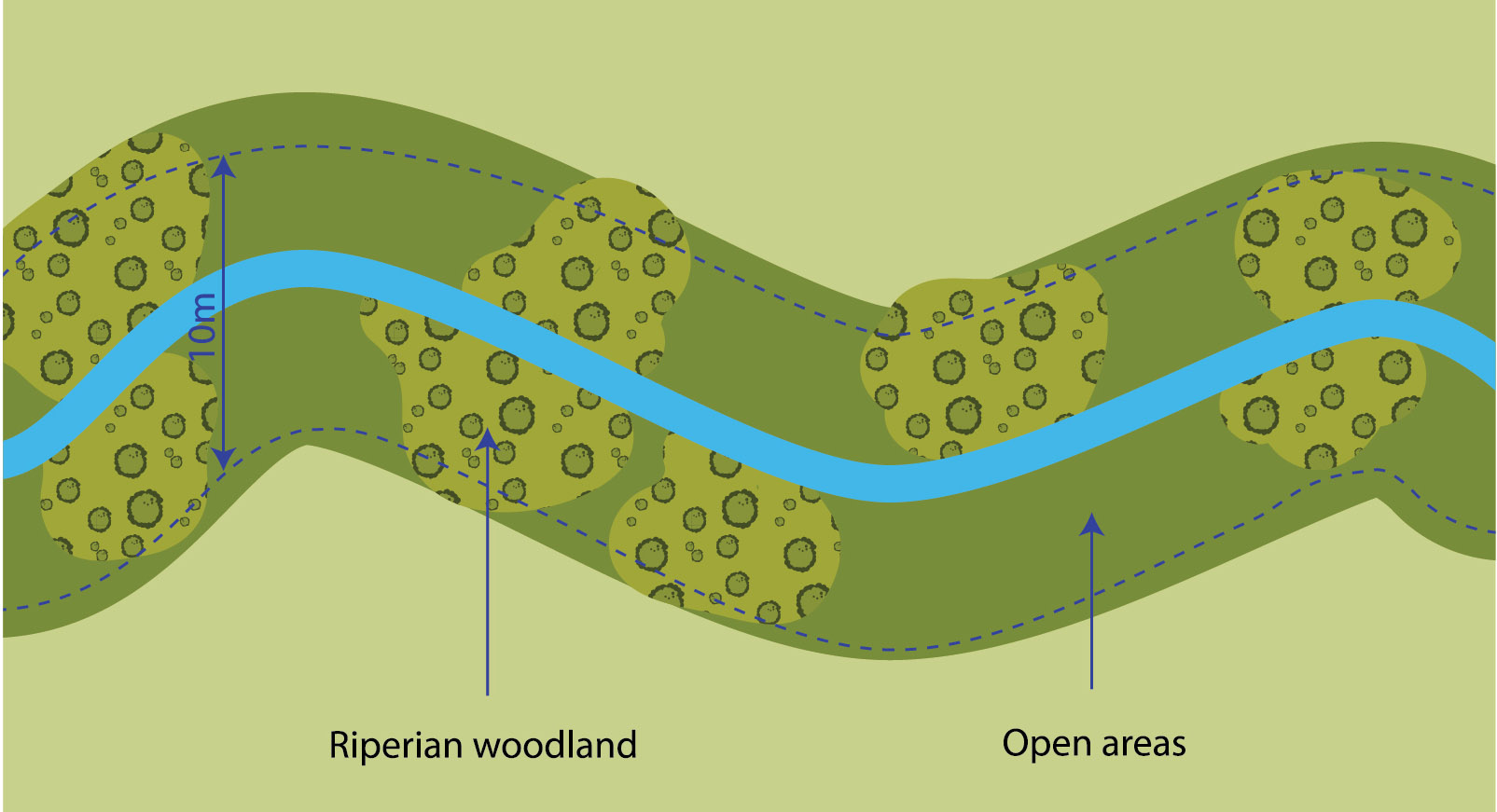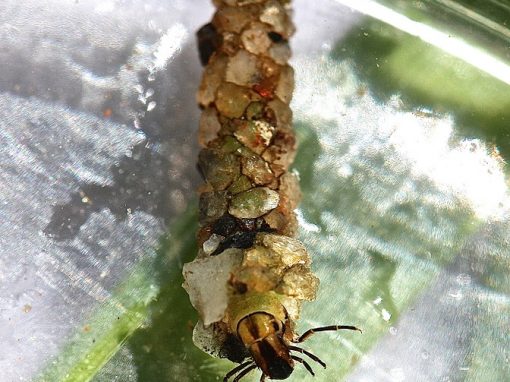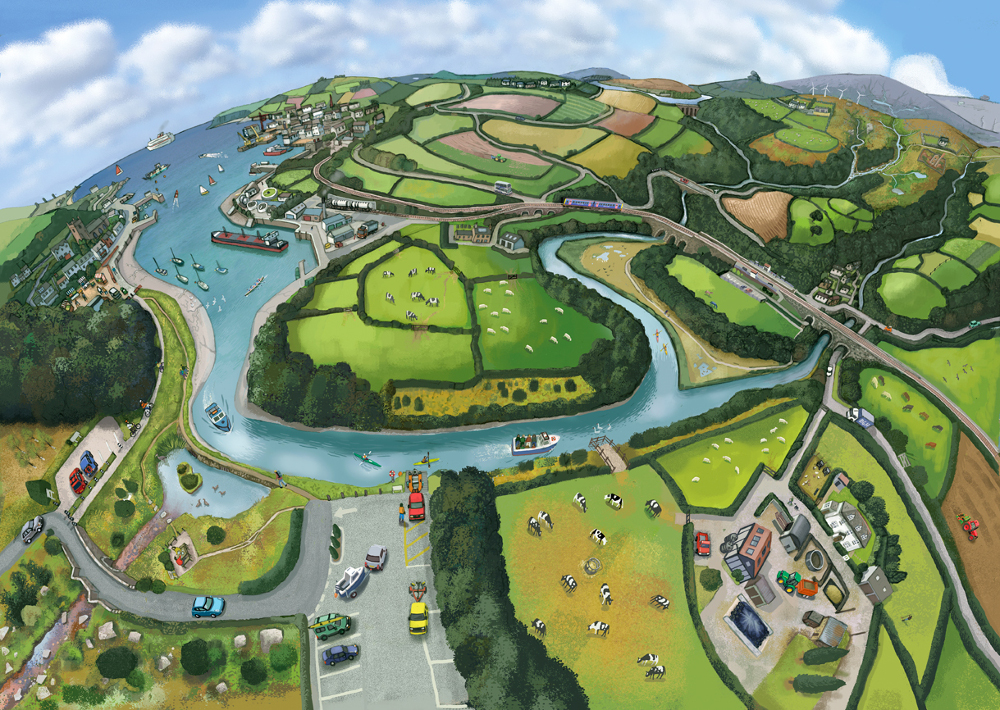River restoration is a complex business. In any given week, the WRT team can be found across the Westcountry, carrying out tasks that range from: landowner engagement to removing weirs; from chemical and biological monitoring to school and community engagement; from data analysis to stakeholder workshops… and countless other activities aside. Among this plethora of activities that all combine to help restore our rivers, the addition of woody material plays an important role…
The need for woody material

To understand Westcountry rivers, we also have to understand the catchment they flow within. As rivers twist and cut through the landscape, the aquatic and the terrestrial systems become interconnected, often in complex ways.
Many of the resources required for aquatic organisms to survive are provided by the constant supply of water within the river system but they also require additional resources that are added to the river from the surrounding land. These resources include…
- Sunlight for primary production
- Atmospheric gases for biological functioning
- Nutrients and minerals for growth
- Physical material for shelter
In this relationship between river and terrestrial habitats, woody material plays a vital role in many UK river ecosystems. Entering the river from surrounding trees, this woody material adds diversity to the river: it offers a range of microhabitats to be used by aquatic organisms at various stages of their growth; traps sediment and creates a variety of velocities within the river (suiting invertebrate species that do not thrive in strong currents and gravel beds) and provides instream cover that is essential for brown trout spawning.
Unfortunately, the channelisation (straightening of meanders) and canalisation (flattening of a river’s gradient) of river channels through history has reduced the complexity of the river bank habitat. However, by adding woody material to these altered river systems, we can restore this diversity and help vegetation to mature along the river.
Reintroducing woody material is an approach that has been taken as far back as the late 19th century to improve habitat and protect banks. As we learn more of the ecological benefits of woody material, its addition is increasingly encouraged across river based projects, with its benefits recognised in the EU Habitats Directive, Water Framework Directive and EU Flood Directive 2007.
Our approach


The River Haddeo before and after the addition of woody material
At the Westcountry Rivers Trust, our fisheries team use woody material as an integral part of our river restoration efforts. By laying trees or introducing and carefully positioning trunks and branches of varying sizes, we can help to reduce bank erosion, and also improve habitat for fish and invertebrates. We often combine this with bankside tree management; by using material from trees growing along the river, we can also reduce overshading and ensure that the river receives an adequate supply of sunlight to support primary production and the river’s complex food web.

We usually follow the 80:20 rule when clearing bankside vegetation; by creating shallow riffle habitats with 80% light and 20% shade, it’s likely that these sections will support a dense population of phytoplankton, macrophytes, benthic invertebrates and fish, which will benefit the whole river in terms of food supply. In pool habitats, the opposite is the case; 20% light and 80% shade provides larger fish with a refuge from direct sunlight and helps to reduce the risk of high water temperatures that may be lethal for salmonids. Elsewhere, we try to create a ‘dappled shade,’ where water temperatures don’t get too high and yet there’s enough sunlight for primary production of diatoms and macrophytes.
So, if you see our team out on the river clearing vegetation and reintroducing it into the river, this is what it’s all about!


The River Mole before and after the addition of woody material
Other Data & Evidence Activities

















